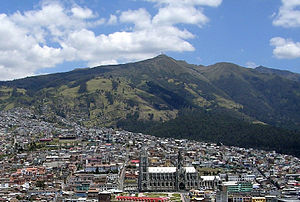CARNIVAL
Origin
Carnival
is a celebration that takes place immediately before the start of the Christian
Lent, which starts in turn with Ash Wednesday, which has variable dates between
February and March depending on the year. Carnival combines elements such as
costumes, parades and street parties. By extension some similar parties are
named in any season. Despite the great differences that its celebration
presents in the world, their common characteristic is that of being a period of
permissiveness and some slippage. In the beginning, probably with a certain
sense of modesty own religion, Carnival was a parade in which the participants
wore costumes and wearing masks. However, the habit was transforming the
celebration into its present form. The origin of its celebration seems likely
of pagan festivals, such as those performed in honor of Bacchus, the god of
wine, the Roman Saturnalia and Lupercalia, or those performed in honor of the
Apis bull in Egypt. According to some historians, the origins of this festival
date back to ancient Sumeria and Egypt more than 5000 years ago, with
celebrations very similar at the time of the Roman Empire, where the custom in
Europe expanded, being brought to America by the Spanish and Portuguese in the
fifteenth century sailors.

Traditions and activities in
Ecuador
allegorical parades, the
traditional game with water and indigenous celebration of the first crops come
together in a mix of colors, textures and flavors in the carnival of Ecuador.
Almost everywhere in the country except the major cities have lost their usual
tumult and noise, the carnival has reached its fullest, in the absence of a day
to finish this festive period which began on Saturday.
Carnival has been intense,
especially at sites of tourist concentration in the central highlands, but
above all, on the beaches. Water play continues as the largest carnival
tradition in Ecuador and consists of soaking each other, with family or
friends, rubber balloons inflated with liquid or large containers, which
ensures wet.
In some parts also attend
other most striking elements such as flour or aniline dyes, difficult to hide,
but the game almost always ends with a good sip of "canelazo" an
infusion of cinnamon combined with cane liquor. the traditional game with water
coming from the colonial times, when the parishioners, at the time of the
carnival, was soaked as a symbol of cleansing or purification before entering
Lent which leads to Easter.
However, water use has
mutated and now, in many cities, allegorical parades are held with flashy
extras that invite dancing and singing. The carnival in the Andean city of
Guaranda is one of the most striking because it combines water play and
comparsas, marinated with the warmth of its people at this time opens the doors
of the houses to invite acquaintances and tourists. It is also very traditional
carnival of Ambato, also in the center of the Ecuadorian Andes, known as the
parade "of fruit and flowers" where the allegorical carriages are
decorated by a variety of own vegetables this agricultural area and livestock
.
 In Ambato water play is not
supported, although it is usual to use foam carnival. In the town of Amaguaña,
near Quito, visitors can enjoy the game with water, flour and aniline, amid a
torrent of people march to the sound of bands people. In Esmeraldas, in the
north-west coast, the beaches invite to dance and sway of palm trees attracts
thousands of tourists, also attracted by the festival of African music, with
groups from Colombia, Peru, Jamaica, Mexico, Argentina and African countries.
In Ambato water play is not
supported, although it is usual to use foam carnival. In the town of Amaguaña,
near Quito, visitors can enjoy the game with water, flour and aniline, amid a
torrent of people march to the sound of bands people. In Esmeraldas, in the
north-west coast, the beaches invite to dance and sway of palm trees attracts
thousands of tourists, also attracted by the festival of African music, with
groups from Colombia, Peru, Jamaica, Mexico, Argentina and African countries.
Food
in Ecuador for "carnival"
Ecuador is a country which also
features carnival recognized worldwide and also where the food is the star.
In Guaranda, capital of the
Ecuadorian province of Bolivar, live in these days "festival" and is
on the street where you can taste their dishes more simbólicos.En this time meat,
especially pork, they are those that serve to carnival culinary star cook: the
"mote con fry" a plate of pork cooked in water and orange juice with
cumin, garlic, onion, salt and pepper and served with mote (roasted corn).









